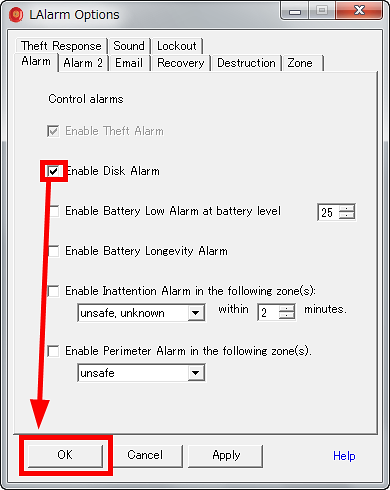

- Datastore usage on disk alarm in vsphere 6.5 how to#
- Datastore usage on disk alarm in vsphere 6.5 full#
To view the tasks and events associated with an inventory object, select an object listed in the vSphere Client, navigate to the “Monitor” tab, and click “Tasks and Events” in the left sidebar.

Tasks are actions in your vSphere environment that can be scheduled, such as VM migrations and adding ESXi hosts to an existing cluster. Events include activity such as user logins and powering on VMs, as well as configuration changes like enabling or disabling SSH access to an ESXi host. In addition to monitoring key metrics from your vSphere environment, you can also use the vSphere Client to monitor the activity of your ESXi hosts and VMs through tasks and events. For example, if you are looking at the performance charts of an ESXi host you can select either the “Home” view, which displays its key resource metrics, or the “Virtual Machines” view, which provides a breakdown of the 10 virtual machines running on that host with the highest CPU, memory, disk, and network usage. Each view includes different key metric categories for that particular object. You can view different intervals you’ve enabled (e.g., over the last day, week, month, etc.) with the interval dropdown menu above your performance charts.ĭepending on what inventory object you’re observing, both overview and advanced performance charts have a set of different available views. Then, navigate to the “Monitor” tab and click “Performance” and select either “Overview” or “Advanced.” By default, both overview and advanced charts display real-time data collected in 20-second intervals over the past hour. To view performance charts, select one of the inventory objects listed on the left sidebar.
Datastore usage on disk alarm in vsphere 6.5 full#
You can view vSphere documentation for a full list of available metrics and which collection level makes them available. For example, Collection Level 4 includes all the metrics available at Collection Levels 1, 2, and 3, as well as minimum and maximum rollup values (e.g., maximum CPU and memory usage). Each subsequent collection level includes all the metrics of the level preceding it along with additional data. By default, collection intervals collect Level 1 metrics, which include basic overview data such as virtual machine CPU usage and disk latency. Each collection level defines how much monitoring data vSphere will collect at each collection interval. There are four data collection levels (Level 1 to 4). By default, collection intervals are set as follows: Collection Intervalĭata points are collected every 5 minutesĭata points are collected every 30 minutes Data collection intervalsĭata collection intervals define how frequently monitoring data is collected (i.e., its granularity) and how long it remains archived. To prevent overloading your vCenter Server’s database, you can control the volume of data vSphere collects and the amount of time that data is retained by setting data collection intervals and data collection levels. vSphere data collection intervals and levelsĪ large vSphere environment emits a lot of monitoring data.
Datastore usage on disk alarm in vsphere 6.5 how to#
We’ll also take a look at how to configure vSphere to use a syslog forwarder to enable you to send logs to an external log management tool for long-term storage and analysis.



 0 kommentar(er)
0 kommentar(er)
